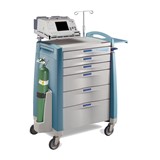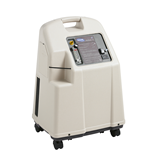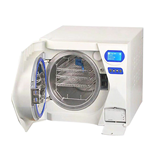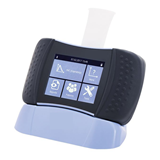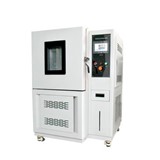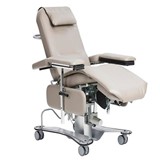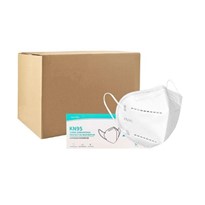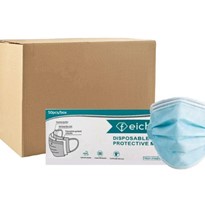When heated and correctly used, a Heat Pack can benefit patients recovering from an injury.
In November 2012, the New South Wales Fire and Rescue requested the TGA provide a web statement on the correct use and purchase of Heat Packs. This was due to the number of patient burns, injuries, and fires caused by incorrectly heating or unsafe use of Heat Packs.
A NSW coronial inquiry was conducted in 2013 after someone died from smoke inhalation when a wheat pack started a house fire. The TGA published another website on 16th May 2013, and it was released in conjunction with an ACCC statement on the Product Safety Australia website.
The TGA conducted laboratory testing, and the report Survey of Microwavable Heat Packs – Version 1.0, September 2019 was published. The TGA tested various Heat Packs for filling temperature, surface temperature, and overheating. They tested nine Lupin packs and 20 Wheat packs. The testing highlighted the importance of having the correct filling quantities and the correct heating instructions. It is preferred to have a maximum surface temperature of 50°C.
They also heated some packs four times the manufacturer’s maximum heating time, and some of these packs recorded temperatures of over 150°C. The contents of the packs often produced smoke, and some of the testing was stopped due to a risk of fire. One pack had a synthetic cover, and this covering melted during the process.
The TGA now states that the manufacturer’s label should be sewn to the pack, and a warning label about not overheating and not using under bedding should be included, as it may catch fire.
Standards Australia published a draft AS/NZS 5116/2015, and this was published as AS/NZS 5116:2016 on 8th June 2016, titled Microwaveable Heat Packs – Wheat and Other Organic Filling Materials.
This Standard provides safety warnings and instructions for the use and maintenance of microwaveable Heat Packs. The foreword of the Standard states that ‘Wheat Packs’ or ‘Wheat Bags’ have long been associated with fires resulting in fatalities, burns, and property loss. The primary issues arise when people have failed to follow the manufacturer’s heating instructions correctly and have overheated the packs. The Standard does not apply to Heat Packs containing synthetic, chemical, crystal, gel, or liquid heating materials.
The internal temperature should not exceed 70°C when heated according to the manufacturer’s instructions. The packs must show no signs of ignition or discoloration, such as scorching, smoldering, gases, smoke, flames, or particles being emitted, melting, or temperature rise.
The packaging should have the manufacturer’s or importer/distributor’s name and contact details and show compliance with AS/NZS 5116:2016, along with the batch lot or date of manufacture. A warning label should be attached to the Heat Pack stating:
- They may be a Fire and Burn Hazard
- Do Not Overheat – always follow the instructions
- Do Not use under bedding, as the Heat Pack may catch fire if it is overheated and the heat cannot dissipate under the covers
Additional warnings include:
- Do not leave a pack unattended in a microwave
- Do not use directly on the skin to avoid burns
- Do not use directly from the microwave if too hot
- Do not use on one body part for more than five minutes
- Always supervise children if handling Heat Packs
- Do not add any oils or fragrances to the pack, as these may increase the risk of fire.
The manufacturer’s instructions should NOT state to add a glass of water to the microwave, as this could pose a further hazard of scalding. The water has no impact on the moisture content and delays the pack from heating to a satisfactory level, so the patient might unintentionally overheat the pack by repeated heating.
Pelican Manufacturing has been making various products for hospitals, nursing homes, physiotherapists, and occupational therapists for over 37 years. In late 2024, Pelican introduced a range of different designs of Lupin Seed Heat/Cool Packs for use on different parts of the body, such as Ankle/Wrist, Elbow/Knee, Shoulder and Neck, Lumbar, Traps (Trapezius), Hand/Foot, Pregnancy, Single Shoulder, and a General-Purpose size. ‘Special’ designs can also be made to order. Pelican also supplies braces to help keep some of the packs in place to allow patients to walk around. The Elbow/Knee Pack has an adjustable elastic strap to go over the shoulder when attached to the pack so the patient can walk around, and the pack does not need to be done up so tight. When designing the packs, we were guided by the TGA and Australian Standards to manufacture Heat Packs that will be safe for physiotherapists and others to sell, ensuring patients have full instructions to safely heat and use the packs.
There can also be a danger of getting frostbite from Cold Packs. Some people have suffered ‘Ice Burn’ by applying the Ice Pack directly to the skin and using the Ice Pack for too long. From our research, the people who have had Cold Burns were using a gel, synthetic, or chemical type of filling.
When buying any Heat/Cold Packs, make sure they comply with the AS/NZS 5116:2016 Standard and that the manufacturer is registered with the TGA and shows their company registration number, as each manufacturer has their own TGA number.
Representatives on the Australian/New Zealand Standard Committee CS-13 were:
- Agency for Clinical Innovation Burn Injury Network (Statewide Burn Injury Service)
- Australasian Fire and Emergency Service Authorities Council
- Australian Chamber of Commerce and Industry
- Australian Competition and Consumer Commission
- CHOICE
- Consumers’ Federation of Australia
- Leading Age Services Australia
- Ministry of Business, Innovation and Employment, NZ
- National Association of Testing Authorities, Australia
- National Retail Association
- New Zealand Fire Service
- NSW Fair Trading
- Therapeutic Goods Administration, Department of Health








